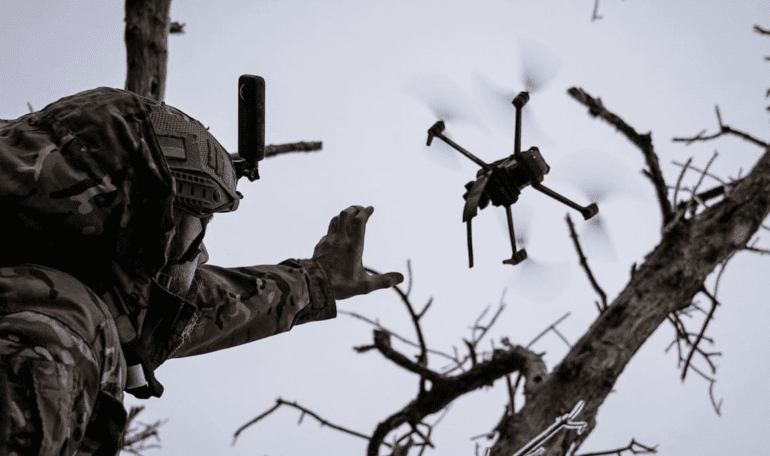TL;DR:
- Ukraine utilizes AI-powered quadcopter drones to counter the invading Russian army.
- Radio-jamming electronic warfare disrupts signals between operators and first-person view (FPV) drones.
- An innovative self-teaching targeting algorithm allows AI to take control and ensure precise strikes.
- Ukrainian company Twist Robotics tests drone-targeting AI successfully.
- Ukraine’s AI drone technology prioritizes minimizing civilian casualties.
- Ukraine initially held a tech advantage but shifted to lightweight FPV drones in the “positional” phase of the conflict.
Main AI News:
In the realm of modern warfare, where technology plays an increasingly pivotal role, Ukraine has harnessed the power of artificial intelligence to bolster its defenses against the invading Russian army. As the conflict rages on, Ukrainian troops find themselves outnumbered and outgunned, but a new generation of AI-powered quadcopter drones is offering a glimmer of hope.
The Challenge: Radio-Jamming Electronic Warfare
Ukraine’s drone operations faced a significant hurdle when the Russian military began employing radio-jamming electronic warfare equipment, known as “E.W.” These jammers disrupted the signals connecting Ukraine’s first-person view (FPV) drones to their operators, rendering them vulnerable and off-course. These FPV drones were vital assets, designed to fly directly into their targets and detonate, guided by a human controller.
The Solution: Self-Teaching Targeting Algorithms
Recognizing this vulnerability, Ukrainian drone developers set out to develop an innovative solution—an algorithm that rapidly learns to identify a drone’s intended target. When jamming interference disrupts the command signal, this AI system seamlessly takes control, ensuring precise strikes even in the absence of human guidance.
Twist Robotics, a Ukrainian company, has already tested such a drone-targeting algorithm, effectively allowing drones to be guided by the AI system once the target is locked. This technology promises to be a game-changer on the battlefield, providing Ukrainian forces with a crucial advantage against their adversaries.
The Bright Side of Military AI
While the use of artificial intelligence in military applications has raised concerns elsewhere, Ukraine’s drone-steering AI represents a beacon of hope. Unlike Israel’s AI air strikes, which have raised questions about civilian casualties, Ukraine’s AI-powered drones are designed to protect innocent lives, offering a stark contrast in the complex landscape of military AI applications.
Ukraine’s Tech Advantage
Ukraine’s journey into the realm of AI-driven warfare was not always a necessity. In the early stages of Russia’s aggression, Ukraine held a significant edge in robotics, thanks to its robust tech sector and close ties to the high-tech industry in the United States and Europe. Ukrainian TB-2 drones, equipped with missiles, proved highly effective against Russian forces in the initial weeks of the conflict.
Evolution of Drone Warfare
As the conflict transitioned into a “positional” phase, with both sides entrenched and struggling to make significant advances, small FPV drones emerged as the weapon of choice for Ukrainian brigades. These lightweight drones, carrying explosives and weighing only a few pounds, have become a daily staple for Ukrainian forces, with President Volodymyr Zelensky pledging to produce another million FPV drones in the coming year.
In the crucible of war, where innovation often arises from necessity, Ukraine’s AI-driven drones are reshaping the battlefield. With technology that adapts to the challenges of modern warfare, these drones offer a glimpse into the future of conflict resolution, where AI and human ingenuity work hand in hand to safeguard lives and secure nations.
Conclusion:
The integration of AI-powered drones in Ukraine’s defense strategy is a significant development in modern warfare. This technology not only enhances precision but also emphasizes the protection of innocent lives. While initial tech advantages may fluctuate in prolonged conflicts, the adaptability of lightweight drones underscores the importance of AI-driven innovations in the military sector, presenting opportunities for growth and innovation in the defense technology market.

